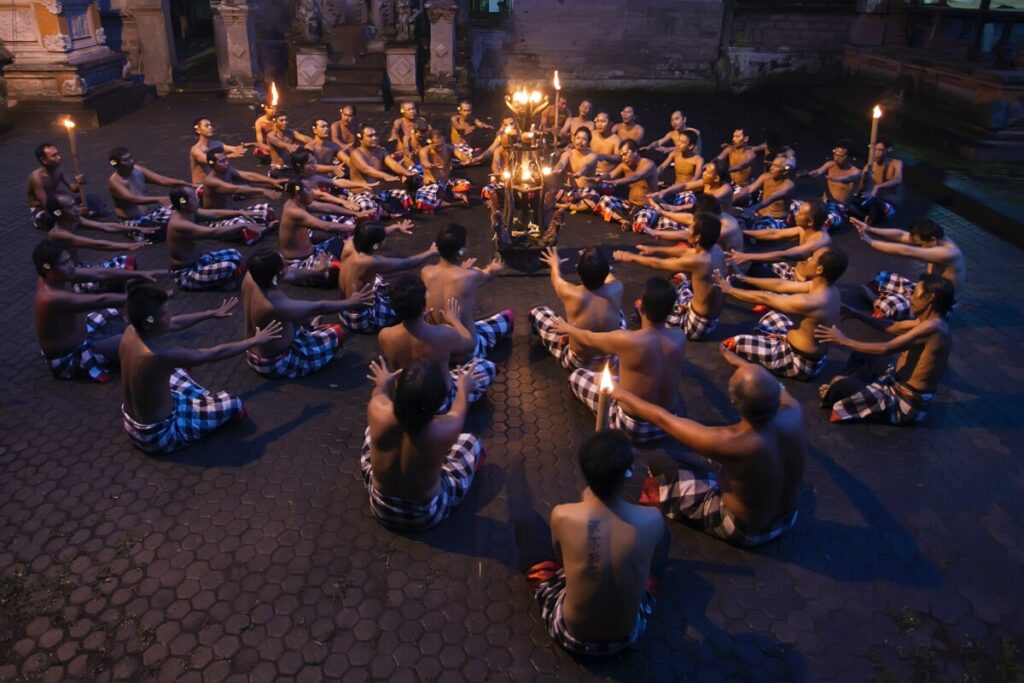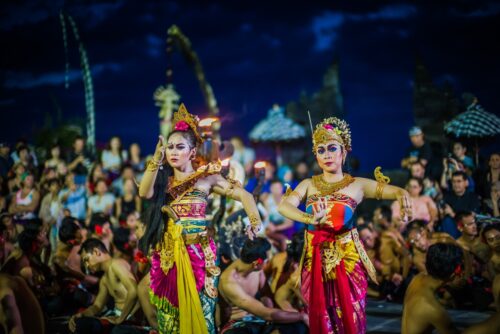Bali, the Indonesian island common for its breathtaking beaches, lush landscapes, and warm culture, is a treasure trove of diverse dance traditions. These ancient forms of artistic expression hold deep cultural significance, often intertwined with religious rituals and storytelling. As we embark on this journey, we’ll delve into the captivating world of Balinese dance, exploring its various forms, its histories, and its role in the lives of the Balinese people.
The Spiritual Tapestry of Balinese Dance
At the heart of Bali dance lies a profound spiritual connection. These dances are not merely performances but deeply rooted expressions of devotion and reverence. The movements, costumes, and music create a sacred tapestry that tells stories of gods, demons, and ancient legends. For instance, the Barong and Rangda dance enacts the eternal battle between good and evil, embodying the constant struggle for cosmic balance.
These performances often occur in temples and are considered offerings to the gods. The dancers become vessels, embodying the deities they portray, and through their movements, they communicate with the spiritual realm. This dance form is a visual spectacle and a conduit for a profound spiritual experience, connecting the earthly with the divine.
The Graceful Elegance of Legong Dance
One must mention the exquisite Legong to speak of Bali dance. This dance form, characterized by its intricate finger movements and delicate footwork, celebrates feminine grace and refinement. Traditionally performed by young girls, the Legong tells stories of love, courtship, and royal life. As the dancers gracefully glide across the stage, adorned in ornate costumes, they transport the audience to a world of ethereal beauty.
The Legong is a testament to its performers’ meticulous training and dedication. In this art form, performers carefully craft every movement, imbuing each gesture with profound meaning. It’s a dance that demands both physical agility and emotional depth. As the music swells and the dancers move in perfect synchrony, it’s as if time stands still, and we are transported to an ageless realm of beauty and poise.
Read More:
The Pioneering Journey of Creative Industries in the World of Travel
Everyday Style: Choosing Outfits for Activities
Trance and Fire: The Mesmerizing Kecak Dance
In stark contrast to the grace of Legong is the powerful and hypnotic Kecak dance. This unique form is performed by a large group of men in a circle, chanting “cak” rhythmically. The mesmerizing sound creates an otherworldly atmosphere, evoking a trance-like state. Often, the dance culminates in the awe-inspiring “fire dance,” where the performers dance barefoot on burning coconut husks, a testament to the spiritual protection bestowed upon them.

The Kecak is a prime example of how Balinese dance transcends mere entertainment, delving into ritual and spiritual expression. The repetitive chants and the intense energy generated by the performers create an almost meditative experience for both participants and spectators. It’s a dance that defies conventional boundaries, inviting us to explore the deeper layers of human consciousness.
Topeng: The Art of Masked Performance
Topeng, meaning “mask” in Indonesian, is a captivating dance form that combines movement, music, and storytelling. The dancers don intricately carved masks, each representing a specific character or archetype. They bring these characters to life with precise movements, conveying emotions and narratives with eloquent gestures. Topeng performances are a window into Balinese folklore and offer a deeper understanding of the island’s rich cultural heritage.
The masks in Topeng are more than mere props; they are extensions of the performer’s identity. Behind each mask lies a story, a history, and a personality waiting to be revealed. The dance becomes a transformation journey as the performer transitions from one character to another, blurring the lines between reality and myth. It’s a testament to the skill and artistry of the dancers, who breathe life into these wooden visages.
Contemporary Takes on Tradition
While ancient dance forms are special in Bali’s cultural landscape, the island is also a hub for contemporary dance interpretations. Modern choreographers and dancers draw inspiration from traditional roots, infusing them with innovative styles and global influences. This fusion of old and new breathes fresh life into Balinese dance, ensuring its relevance and vitality in the ever-evolving art world.
Contemporary Balinese dance is a testament to the adaptability and creativity of the island’s artistic community. It’s a dynamic conversation between tradition and innovation, where age-old stories find new voices and expressions. This evolution ensures that Balinese dance remains a vibrant and living art form, resonating with audiences within and beyond the island.
